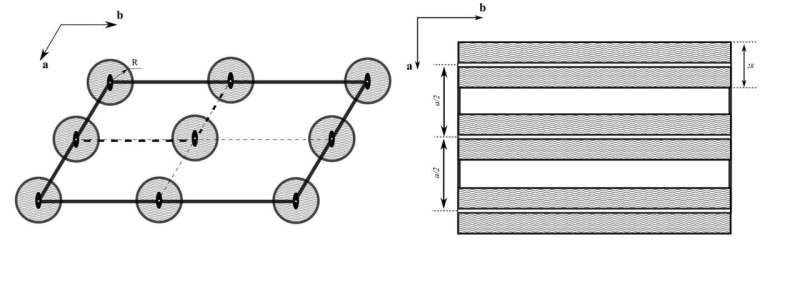A new classification of symmetry groups in crystal space proposed by Russian scientists

The mutual arrangement of atoms in crystal space is known to correspond to the minimum of the potential energy of interaction of all crystal atoms. The principle of potential energy minimum can be implemented in a number of geometric ways for approximate description of the atomic arrangement in crystals. In particular, these include the principle of close packing for crystals of inorganic compounds with undirected bonds and the principle of close packing of molecules for molecular crystals. Researchers at the Department of Crystallography and Experimental Physics of the Lobachevsky University believe that when analyzing the possibility of implementing a specific space group as a crystal symmetry group, it is important to consider the main factors the volume and shape of the part of crystal space where ions or molecules can be located, as well as the symmetry of molecules (because of the presence of regular systems of points at which the atoms of a given molecule can be located).
"If one considers atoms as geometric objects, which have a finite volume comparable with the volume of a crystal unit cell, it is necessary to consider the geometric limitations on the mutual arrangement of atoms in crystal space. These limitations are due to the fact that the distance between two atoms cannot be smaller than the sum of their crystallochemical radii," says Lobachevsky University Professor Evgeny Chuprunov.
Each of the 230 symmetry space groups is characterized by specific limitations on the atomic arrangement in crystal space, which are determined by the set of elements of space group symmetry, as well as the unit-cell sizes. This means that some regular systems of points of these groups cannot exist in nature for purely geometric reasons. The set of these points forms "forbidden regions" in crystal space, and the existence of such regions was demonstrated by the outstanding chemist and crystallographer, laureate of the Chugaev Prize Mikhail Porai-Koshits.
"We have determined the symmetry of forbidden regions for packing solid circles in a two-dimensional space, whose symmetry is described by one of two-dimensional space symmetry groups. It was also established that, depending on the symmetry of forbidden regions, two-dimensional space symmetry groups can be divided into seven classes," says Nikolai Somov, associate professor of the UNN Department of Crystallography and Experimental Physics.
The symmetry of forbidden regions was determined by Lobachevsky University researchers for packing solid spheres in the three-dimensional crystal space of different symmetry. According to the results obtained, 230 space symmetry groups are characterized by 33 classes of spatial symmetry of forbidden regions.
"The approach proposed here can be generalized for the case of n-dimensional spaces of larger dimension and packing of elements of a more complex shape," summarizes Evgeny Chuprunov.
More information: N. V. Somov et al, On Forbidden Positions in Crystal Space, Crystallography Reports (2018). DOI: 10.1134/S1063774518030264
Provided by Lobachevsky University





















